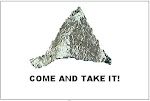I'm preparing to Emcee the Libertarian Party of Oklahoma's "WTF (Where's The Freedom) Day" at the Capitol on Monday. We are highlighting some of the most Liberty unfriendly bills that are being introduced this session. As I am familiarizing myself with some of the different speakers we've lined up to discuss each bill, I find I will be in the company of a very diverse group of people.
It seems these laws are all targeting groups of people that are in the minority in some way, be it because of race, religion, lifestyle choices, etc. Some of them controversial, but some of them are just in the minority.
It struck me how the state can establish and maintain power through this kind of bigotry. Increasing their power to regulate the lives of minority groups, and doing so not only with little push back from the majority of their constituency, but with their enthusiastic support.
If I wasn't paying attention to this, I would have likely just let it pass. These are people I don't associate with, some of them I don't even agree with, so the effect these laws have on me isn't readily apparent. But when I consider the foundation of power these laws establish for the state, at the expense of other people's rights, I realize that my rights are being traded as well.
The importance of standing against these kinds of actions by the state cannot be over stated. If we allow the state to traffic in the rights of others, then we've allowed it to establish itself over all of us.


